Trusted Expert Movers: Your Stress-Free Relocation Solution
Relocating is an intricate process, a task that requires meticulous planning and execution. With approximately 40 million Americans moving each year, a significant number experience the challenges that come with transition, generating a demand for expertise that ensures a seamless move.
Expertise makes the difference.
With that in mind, our team has cultivated a spectrum of strategies that reduce the stress of moving, transforming what can be a tumultuous undertaking into a streamlined and manageable process.
Planning Your Move with Expert Movers
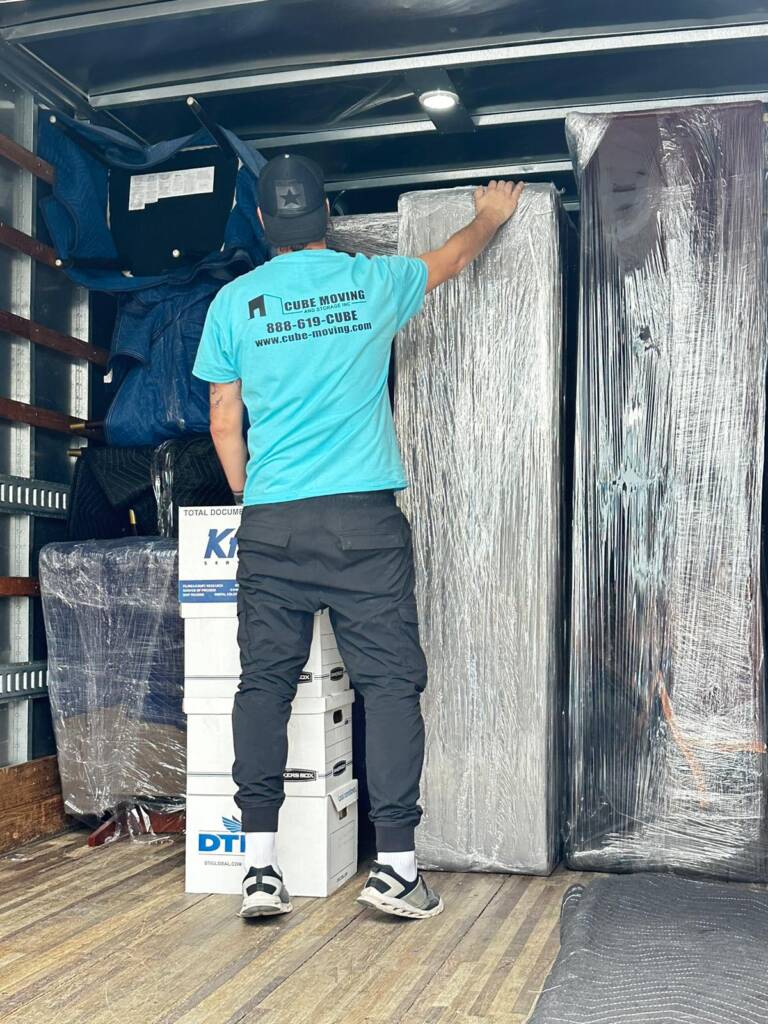
Meticulous planning is the cornerstone of a stress-free relocation. Begin by establishing a comprehensive moving checklist that outlines every task, from sourcing packing supplies to confirming moving day logistics. This timeline should be initiated as soon as the decision to move is confirmed. Not only will it serve as a blueprint for the weeks leading up to the move, but it will also highlight tasks that can be executed ahead of time, alleviating undue pressure as moving day approaches.
Ensure the mover you select is reputable, verifying their USDOT number for interstate moves or checking state regulations for local relocations. Request detailed quotes from multiple companies to compare services and costs. It is paramount to read customer reviews and check the mover’s track record of reliability and professionalism before making a commitment, securing peace of mind well before the first box is packed.
Choosing the Right Date
Selecting a strategic moving date can significantly reduce the complexity and cost of your move.
Midweek moves often see less demand, potentially translating to more flexibility and cost efficiency from moving companies.
When pondering dates, remember that peak moving season spans from May through September. To avoid premium rates and tight schedules, consider an offseason move when possible.
Furthermore, leases and real estate transactions frequently turnover at month’s end, leading to a surge in moving activity. Aiming for mid-month could offer greater availability and attentive service from your expert movers.
Inventorying Your Belongings
Creating a detailed inventory is a crucial step in preparing for a move.
- List all items room by room for easier tracking and to ensure nothing is forgotten.
- Assign categories such as ‘keep’, ‘sell’, ‘donate’, or ‘dispose’ to organize your belongings effectively.
- Note the condition of each item to document their state before the move, which can be essential for insurance purposes.
- Estimate the value of items, especially for those that are valuable or sentimental, to decide on additional insurance coverage.
- Label boxes clearly with contents and their designated room in your new home for efficient unpacking.
Identifying superfluous items can reduce moving volume and expenses.
An accurate inventory assists in obtaining an accurate estimate from your expert movers.
Budgeting for Moving Expenses with Expert Movers
Efficiently allocating finances for a move is pivotal for a seamless transition.
- Research Costs: Gather quotes from multiple moving companies for a comprehensive cost comparison.
- Moving Supplies: Account for the expense of boxes, packing materials, and possibly a dolly or moving blankets.
- Travel Fees: Consider gas, tolls, and potential hotel stays if your move covers a significant distance.
- Insurance: Allocate funds for optional insurance to protect your belongings during transport.
- Additional Services: If you require packing, furniture disassembly, or storage, anticipate these extra charges.
- Emergency Fund: Set aside a contingency amount for unforeseen circumstances during the move.
Prioritize your moving expenses to prevent unexpected financial strains.
Forecasting and setting aside resources for these costs can significantly mitigate moving day stress.
Packing Like a Pro with our Expert Movers
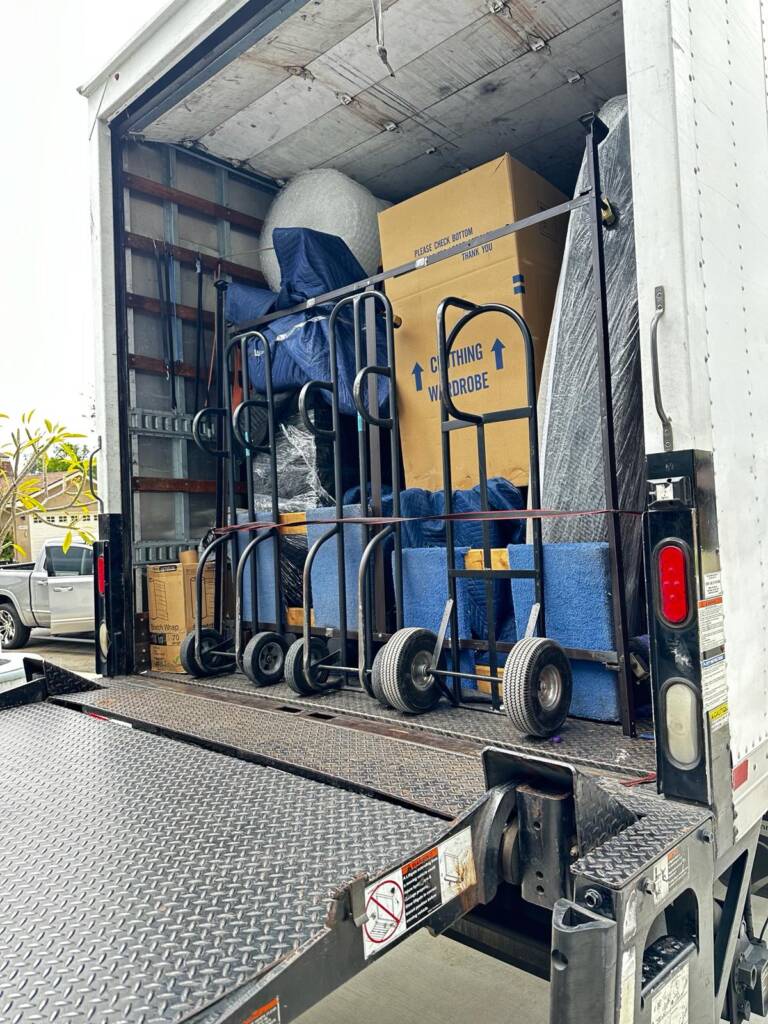
Efficient packing is more than tossing belongings into boxes. It involves a strategic approach that begins with decluttering—paring down possessions to essentials and donating or discarding the rest. Invest in quality packing materials: sturdy boxes, packing tape, bubble wrap, and permanent markers are foundational tools. Label each box meticulously, not just with its contents, but also the room it’s destined for in your new home. This will streamline both the loading and unloading processes and facilitate immediate functionality upon arrival. Delicate items require special care; utilize custom crating, or wrap them in bubble wrap and secure them within solid boxes. Create an inventory list, a detailed account of what’s packed, to oversee the safe transport of all items. Advanced planning and organization are the vital components of packing like a professional; they lay the groundwork for a successful and stress-free move.
Essential Packing Supplies
Acquiring the right packing supplies is crucial for protecting your belongings during a move.
- Sturdy Boxes: Invest in various sizes for different items.
- Packing Tape: High-quality tape ensures boxes stay sealed.
- Bubble Wrap: Essential for wrapping and cushioning fragile items.
- Packing Paper: For wrapping and padding items, preventing scratches.
- Stretch Plastic Wrap: To secure items and furniture drawers.
- Permanent Markers: For clear labeling of box contents and destination.
- Box Cutters: For easy unpacking at your new residence.
- Furniture Pads or Moving Blankets: To protect furniture from damage.
- Mattress Bags: To keep mattresses clean and protected.
- Wardrobe Boxes: For easily transferring clothing without folding.
Choosing high-quality, purpose-specific supplies will enhance the safety of your possessions.
Secondary items like labels and colored stickers can help with organization, room identification, and inventory management.
Systematic Labeling Strategies From Expert Movers
Effective labeling transcends merely writing on boxes; it’s about developing a methodical approach to inventory management.
Adopting a color-coding system elevates the organization to a novel level of efficiency. By assigning a unique hue to each room, you can immediately identify the destination of each box, streamlining the unloading and unpacking processes. Moreover, this approach not only saves time but also significantly reduces the likelihood of boxes ending up in incorrect locations.
When supplementing color with detailed labeling, specificity is key. Label each container with not just the room, but also a brief list of contents. This strategy not only assists with prioritizing the unpacking of essentials but also proves invaluable if a box goes missing or items within it are needed unexpectedly during the transition.
Lastly, consider maintaining a comprehensive inventory list that corresponds with your labeling system. A detailed ledger, digital or physical, tracking box numbers, colors, and listed items, serves as an indispensable tool to manage the totality of your move. Such meticulous documentation can safeguard against the inconvenience of misplaced goods, streamlining the resettling process and ensuring a smoother transition into your new abode.
Protecting Fragile Items
Proper preparation is pivotal when it comes to safeguarding fragile items during a relocation. Utilize strong, corrugated boxes and ample cushioning material to provide a secure environment for your delicate possessions.
When packing, each fragile item should be individually wrapped in bubble wrap or packing paper. Adequate padding between items is crucial, as it prevents scratches and minimizes the chance of damage from impacts that can occur during transit.
For an additional layer of protection, utilize compartmentalized boxes, especially designed for glassware and dishes. These dividers further isolate each piece, significantly reducing the potential for collision and breakage while moving from one location to another.
Do not forget to reinforce the bottom of the boxes with high-quality packing tape, and fill any voids within the box with additional cushioning materials such as loose-fill peanuts or crumpled paper to prevent the contents from shifting.
Finally, clearly mark each box containing fragile items with bold lettering indicating “Fragile” or “Handle with Care” on multiple sides. This universally recognized labeling is essential to ensuring that these boxes are given additional caution during the handling and transport phases.
Hiring Moving Help
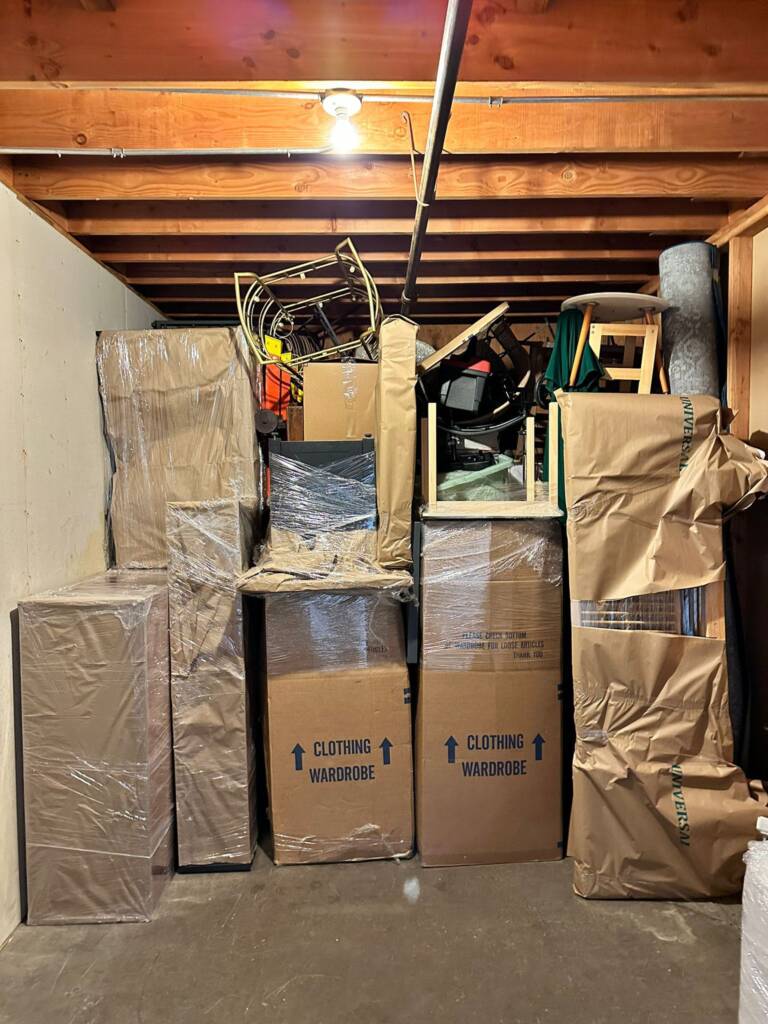
When selecting professional expert movers, prioritize research and thorough vetting. Look for companies with a robust track record, positive customer testimonials, proper licensing, and insurance coverage. It’s imperative to choose a team that demonstrates a high degree of professionalism and a commitment to safeguarding your belongings. Ask for detailed estimates, and ensure all potential fees and services are transparently communicated before signing any agreement.
Carefully contemplate your moving date flexibility and book services as far in advance as possible. Premium moving firms often have busy schedules, especially during peak seasons. Early booking not only secures your preferred date but also can afford you more favorable pricing and availability. Remember, a reliable mover is an integral component in orchestrating a successful relocation.
Comparing Moving Companies
Selecting the right moving company necessitates a comparison of several vital factors.
- Reviews and Testimonials: Gauge the feedback from previous customers to assess service quality.
- Licenses and Insurance: Verify that the movers adhere to regulatory compliances and offer coverage options for your belongings.
- Quotes and Estimates: Obtain detailed, transparent cost estimates and compare them across companies.
- Services Offered: Ensure the company provides the specific services you need, such as packing or storage solutions.
- Experience with Your Specific Needs: Consider companies that have expertise relevant to your move, be it high-rise apartments or specialized items.
- Professionalism and Communication: Assess how promptly and professionally the companies respond to your inquiries.
Choosing wisely is cost-effective and ensures peace of mind.
Experience, reliability, and transparency in pricing are paramount when making your choice.
Understanding Moving Insurance
Valuation coverage and actual insurance are distinct concepts in the moving industry often misunderstood. It’s crucial to differentiate between the two to ensure your possessions are adequately protected during transit.
Basic liability, often called released value protection, is typically included free by expert movers, providing minimal compensation.
For items of significant value, consider purchasing full-value protection from your movers or a third-party insurance provider, which covers the repair, replacement, or reimbursement of damaged items.
While moving insurance can add to your overall expenses, it is an investment in the security of your belongings. Be sure to understand the terms, such as deductibles and coverage limits, to make an informed decision that aligns with your particular needs and the value of your possessions. In event of a mishap, this foresight can prove invaluable, transforming a potentially disastrous situation into a manageable inconvenience.
Coordinating with Movers
Create a detailed inventory list of your items.
Working with seasoned movers requires clear communication. Establishing a comprehensive list of belongings to be relocated enables precise coordination and minimizes the potential for miscommunication. A descriptive inventory aids in tracking items throughout the move, allowing for a systematic approach and providing peace of mind. Accurate labeling of boxes can simplify the unpacking process and ensure that delicate items receive the proper handling.
Communication should be clear and ongoing.
Ensure all details are confirmed well in advance. Proactive clarification of the move’s specifics – such as exact dates, times, and any special requirements – helps prevent last-minute complications. Open lines of communication facilitate a smoother transition, allowing both parties to address unforeseen circumstances promptly.
Consider logistics like parking and elevator access.
Ponder potential obstacles in advance. Evaluating the logistics concerning your movers, such as parking arrangements, building access, and elevator reservations, can prevent avoidable delays. Smooth logistics are central to maintaining project momentum and ensuring the efficient use of time and resources.
Pack personal essentials separately for easy access.
Reconfirm all details a few days before the move. Before the moving date closes in, a final confirmation call ensures that all arrangements are in place and any outstanding questions are resolved. This conversation is an opportune moment to review the specifics, ensuring the execution of the move aligns with your expectations and addressing any lingering concerns.
Final Moving Day Tips
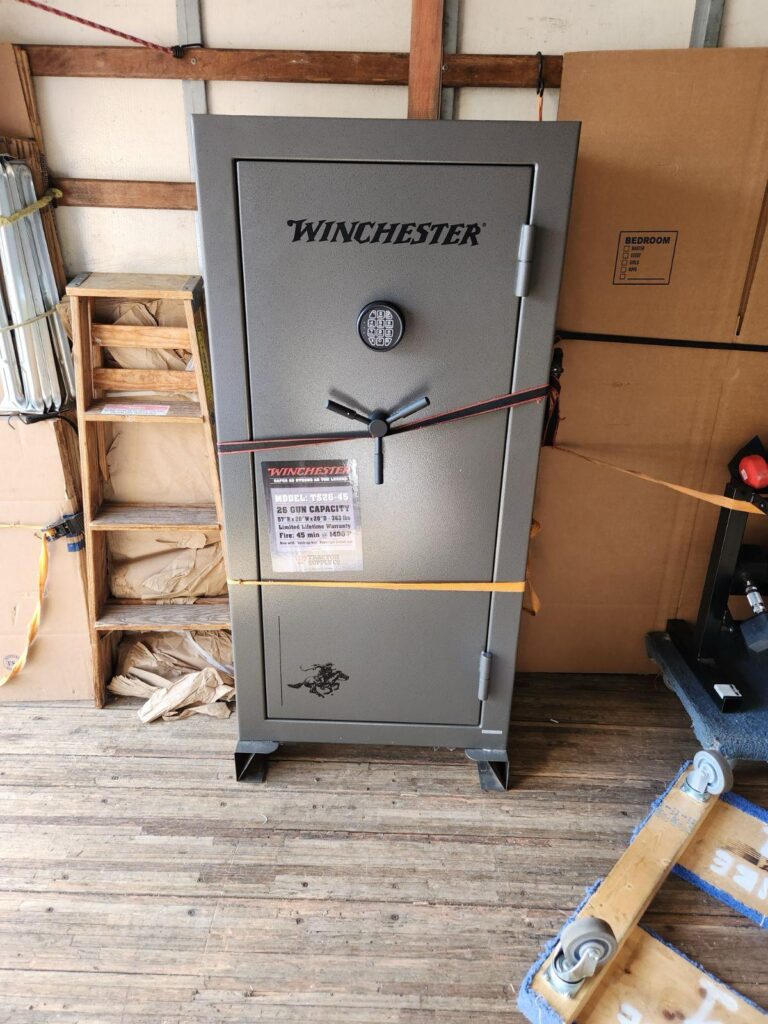
On the day of your move, having a clear, well-thought-out plan is invaluable. You should be present to guide and answer the expert movers’ queries, which ensures your belongings are handled precisely as you intend. A comprehensive walkthrough of both the departure and destination premises enhances the accuracy and efficiency of the move, minimizing any risk of misplacement or mishandling.
In the hours before the movers arrive, perform a final check of the premises. This entails a meticulous review of each room to ensure nothing is left behind – a “sweep for strays,” if you will. Carry valuable items, like jewelry and important documents, personally to maintain their security. Meanwhile, prepare a refreshment station for the movers—it’s a thoughtful touch that can boost morale and productivity on what is sure to a demanding day.
Essential Moving Day Kit
Moving day can often be chaotic, so a well-prepared essentials kit is crucial for maintaining a semblance of normality amidst the flurry of activities.
To mitigate the stress, compile a portable container or backpack that houses your moving day necessities. This should include toiletry items, medications, a change of clothing, snacks, and drinks to keep you energized throughout the day. You’ll want swift access to these personal items during the transition, particularly if the unpacking process extends into late hours or the following day. Think of it as your survival kit, custom-tailored to preserve your comfort and well-being during the upheaval.
Additionally, keep important tools and cleaning supplies within arm’s reach. This emergency pack should consist of items like screwdrivers, a hammer, nails, light bulbs, trash bags, and basic cleaning products. Quick access to these tools can be invaluable for minor repairs or last-minute touch-ups, ensuring that you leave your former home in good condition and you’re prepared to deal with immediate needs at your new residence.
Lastly, ensure you include vital documents such as identification, lease papers, contracts, and a list of emergency contacts. It’s always wise to hold onto a floor plan of your new home to facilitate the movers’ navigation and place boxes appropriately, minimizing disarray and confusion. This attention to detail will streamline the moving process, providing a structured approach to what can often be a disorienting experience, ultimately securing a more seamless transition into your new homestead.
Managing Moving Day Stress
Strategize the logistics of moving day, assigning tasks clearly to each family member or friend assisting you. This division of labor often prevents overlaps and confusion, making the process far less taxing.
In 2019, the American Moving and Storage Association noted that pre-planning significantly reduces the stress associated with relocation. Establish a central command center on the day, outlining tasks, timelines, and breaks, ensuring everyone is synchronized and the process stays on track.
Moreover, adjust your expectations for the day; not everything will fall perfectly into place. Stay adaptable and maintain open lines of communication among those involved. Delegating roles, such as who manages the expert movers or who is in charge of last-minute errands, can reduce friction and maintain tranquility.
Consciously schedule breaks throughout the day. A five-minute respite every hour or a longer lunch break can improve morale and prevent burnout. Remember that moving is a marathon, not a sprint, and pacing is crucial to maintain efficiency without overtaxing your stamina or mood.
Finally, acknowledge and celebrate the milestones as they happen. Did you finish packing the kitchen? Did the furniture arrive safely? Recognizing these small victories can inject a sense of accomplishment and positivity into an otherwise strenuous day.
Post-Move Unpacking Plan
Develop a systematic unpacking approach to avoid feeling overwhelmed by the sea of boxes. Begin by prioritizing rooms based on their importance and utility.
Unpack essentials first, like bedding, toiletries, and kitchen items to resume daily routines quickly.
Labeling boxes with their contents and intended destination within your new home vastly simplifies the process. Unpack room by room, starting with communal spaces that anchor your home life such as the kitchen, living room, followed by bathrooms, and eventually, bedrooms.
Incorporate organizational solutions while unpacking to cultivate a clutter-free space. Employ shelving units, drawer dividers, and storage solutions in tandem with unpacking. This proactive approach prevents future disarray and inherently creates a more serene and structured living environment. Establish “homes” for your possessions from the onset, instead of placing items temporarily and having to reorganize later.

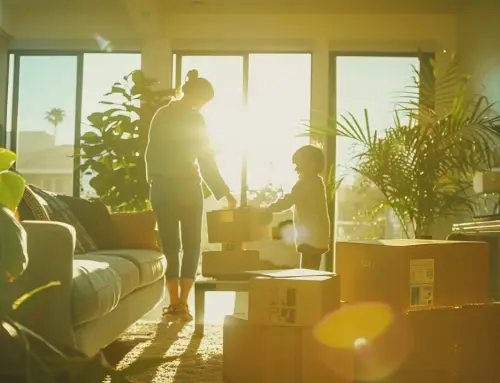
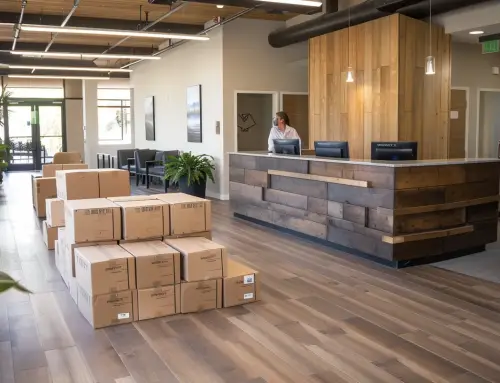

Leave A Comment